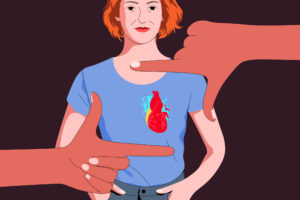Key Medical Tests For Detecting Heart Diseases Before They Strike


Every year in India, heart disease is responsible for almost three million fatalities, standing as the primary cause of death for the Indian population. While sudden cardiac incidents such as a heart attack and cardiac arrest can strike anytime, other heart diseases manifest with minimal or no symptom until it reaches an advanced stage. Early diagnosis and timely intervention can significantly reduce mortality rates and improve the quality of life.
Symptoms of heart problems can include:
- fainting
- slow or fast heartbeat
- chest tightness
- chest pain
- shortness of breath
- sudden swelling in the legs, feet, ankles, or abdomen
“Prevention is better than cure,” and when it comes to heart diseases, early detection is of utmost importance. Early detection can be achieved through various common medical tests, helping to identify potential issues before they worsen. Besides blood tests and a chest X-ray, tests to diagnose heart disease can include:
- Blood Cholesterol Test: The amount of fat and cholesterol in the blood is measured through cholesterol testing. This test helps to determine the risk of heart disease and heart attack. The arteries become clogged with fat, which decreases blood flow. As a result, a heart attack or stroke may occur.
- Electrocardiogram (ECG or EKG): An electrocardiogram (ECG) is a quick test that keeps track of the heart’s electrical activity. It is recorded on a piece of paper. It is used to check for heart damage or an irregular heartbeat
- Echocardiogram: An echocardiography is a heart ultrasound. It makes a picture of the heart using sound waves. It aids in evaluating the heart valves and heart muscles.
- Cardiac CT Scan and MRI Scan: These tests help in scanning the images of the chest, heart, and blood vessels helping in the diagnosis of any heart disease.
- Cardiac Catheterization: Cardiac catheterization is a medical procedure in which a thin, flexible tube (catheter) is inserted into a blood vessel and advanced through the arteries to the heart. The dye flows through the catheter to arteries in the heart. The dye helps the arteries show up more clearly on X-ray images taken during the test.
- Blood Pressure and Heart Rate Monitor: Regular monitoring of blood pressure helps identify hypertension, a significant risk factor for heart disease. It monitors the force or pressure the heart needs to pump blood around the body. To assess the rhythm and beat of the heart, doctors check the pulse. The force of the pulse helps to know the strength of blood flow to different areas of the body.
- Exercise Tests: These tests often involve heart monitoring while doing physical activities such as running, walking, or cycling. Exercise testing can indicate how the heart responds to physical activity and whether or not symptoms of heart disease arise during exercise.
Thus, regular check-ups, early detection through medical tests, and a commitment to a heart-healthy lifestyle are essential for maintaining well-being. By prioritizing heart health, the risk of heart disease can be reduced and a longer and healthier life can be enjoyed.
About the author- Dr. Shuvanan Roy, Director of Cardiology, Fortis Anandapur, Kolkata
